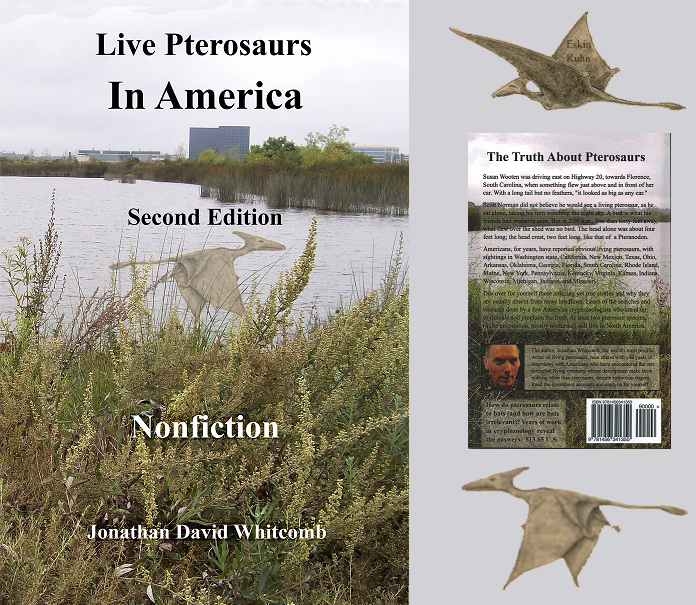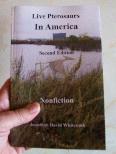The other day I received a package from Australia, from Fred Silcock, who is probably the world’s leading expert on intrinsic bioluminescence in Barn Owls. One item in the package was a copy of an article from BBC Wildlife. But how do barn owls relate to reports of a live pterosaur? It’s the bioluminescence, or at least the hypothesis that both Tyto Alba and modern pterosaurs glow at night, especially when they fly.
BBC Wildlife Article by Richard Mabey (December, 2009, issue)
[The will-o’-the-wisp] was once frequently seen in marshy areas, and I’ve found records for the Waveney Valley where I live. None [of the records] are later than the 1830’s . . . the floating and bouncing, the eerie motion against the wind. One Norfolk fenman remarked that it “flew like an owl.”
But this spring an Australian reader of BBC Wildlife, Fred Silcock, sent me a copy of his self-published book about will-o’-the-wisps Down Under, where they’re called Min Min Lights. It’s based on more than 600 first-hand accounts, and ends with an extraordinary theory about their origins.
Mabey mentioned how Silcock obtained physical evidence for Barn Owl bioluminescence: “He commissioned histological examinations of a number of road-kill barn owls . . . [examinations] revealed dermal structures bearing similarities to known organs of luminescence found in some fish species.”
The Min Min Light (nonfiction book by Silcock, revised edition)
From page 49:
Eddie Sutton of Logan, Victoria, told me of a walk around the farm he took with his grandfather one day . . . when Eddie was a boy. They came upon a dead bird, which Eddie said he later believed was a Barn Owl. ‘That looks like the bird that lights itself up,’ said grandfather.
Eddie’s grandfather, long ago, once went to sleep on a haystack. He was awakened by a bright light next to him. The light rose quickly and flew away, revealing itself as a bird.
From page 50:
“The wife was with me [Mantung, South Australia] and we went into a paddock . . . we saw a bright orange light shoot up from the ground and hover over the trees . . . about 150 metres away. As we got closer the light came down and settled into the canopy of one tree. After a minute or so the light shut off and sitting where it had been was a white owl . . . The Barn Owl is white, isn’t it?” (words of Dennis Stasinowsky)
Marfa Lights of Texas (differs from Min Min and will-o’-the-wisp)
Residents around this part of the state, human residents, see some evidence of intelligence in these lights; that’s why they are called “dancing devils.” Along with that, Mr. Bunnell, one of the world’s leading authorities on the “ML’s” (mystery lights) has been amazed by their complexity. It seems that the scientists, including Bunnell, have no good explanation for that complexity. Non-living entities are deficient, entirely deficient, in any reasonable way, when it comes to reasons for dancing lights, and the dancing are far too complex.




 Did you know that living pterosaurs have been reported in North America, even in the United States? Read the many eyewitness sighting reports by purchasing a nonfiction book on
Did you know that living pterosaurs have been reported in North America, even in the United States? Read the many eyewitness sighting reports by purchasing a nonfiction book on